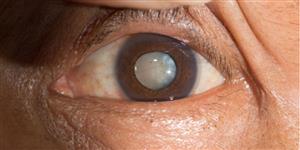GET FREE READING GLASSES ON A SPRING LOADED FRAME
Newly registered patients and residents of Ajuwon, Akute, Alagbole and environs can get free reading glasses every year at Eyeupdate clinic & optical supplies located at 01, Ajuwon junction, Ajuwon bus stop, beside BNPL Filling station.
Information reaching our news room says the free reading glasses initiative is funded as at present solely by Dr. Steven E. N. as part of the “PREVENT BLINDNESS” program. The prevent blindness program is aimed at reducing the preventable causes of blindness in Nigeria. There is expectation that the gesture will include free eye surgeries in the future. Philanthropists and well meaning individuals and companies are welcomed to become part of this program.
Philanthropists, individuals or companies who may wish to support this initiative can make their donations into the below account :
Bank: Zenith bank
Account number: 1012494861
Account name: Eyeupdate clinic and optical supplies
Contact person : Steven Nwosu
Tel: +2347038125887
OR
Western Union money transfer
Name: Steven Nwosu
Address: 01, Ajuwon junction, Lagos – Nigeria
List of Donors and Amount:


